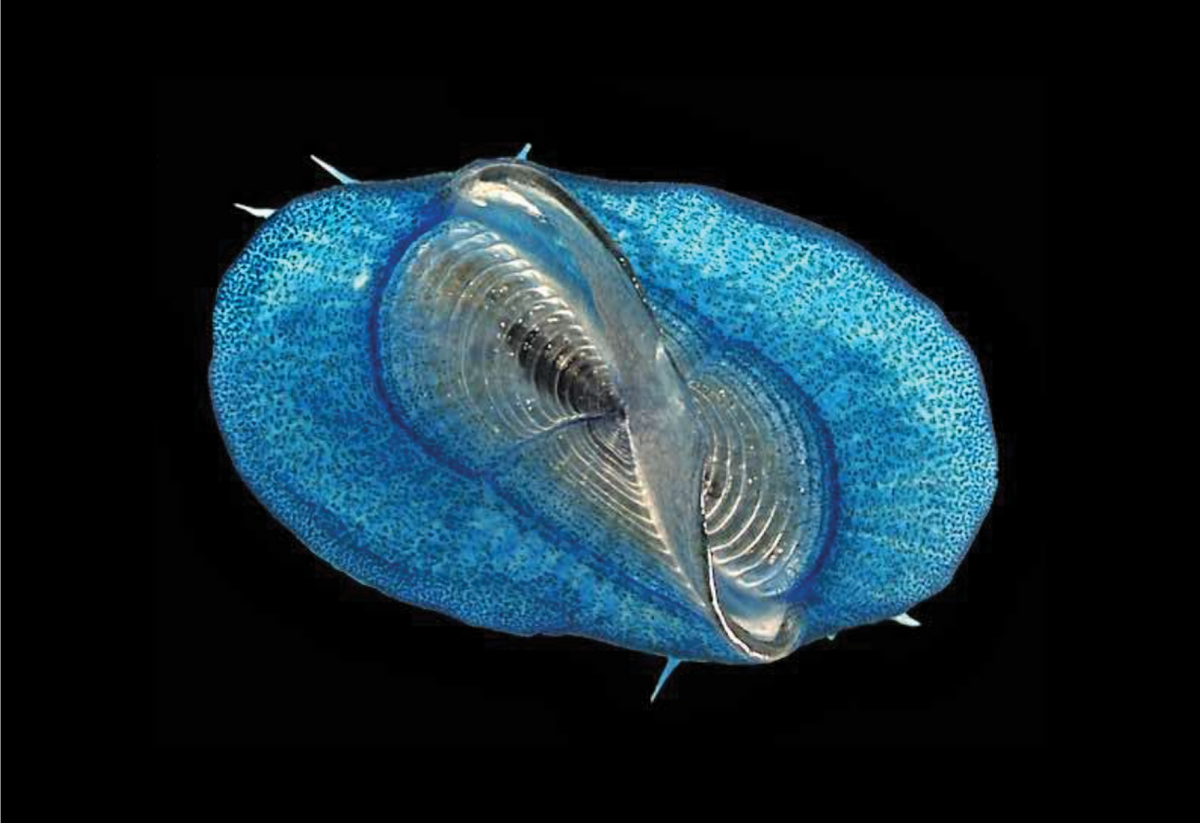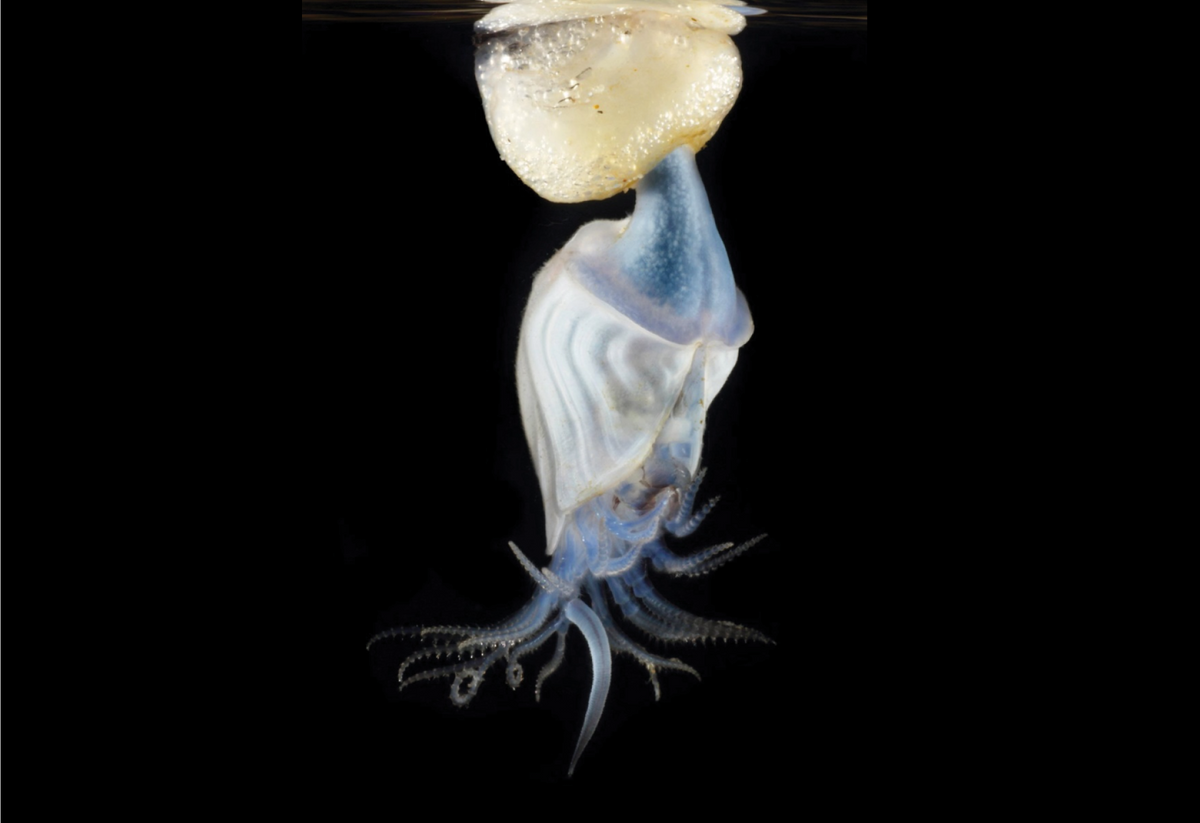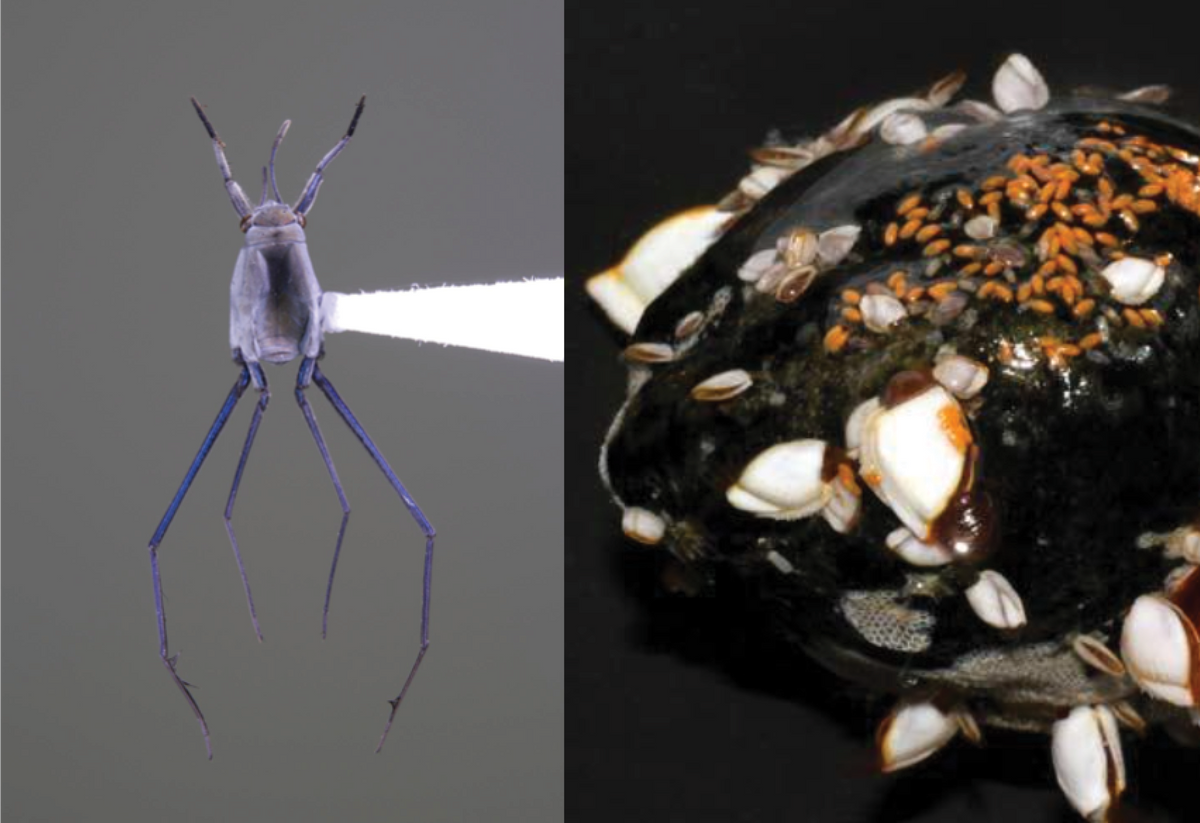
The Portuguese man-of-war (Physalia physalis) is among the most recognizable members of the neuston, relying on long tentacles and a powerful sting to paralyze prey in the open sea.
Blue buttons (Porpita porpita) are made up of tiny, colonial hydrozoans branching from a central, rigid disc. Each hydroid in a colony performs a different function, such as feeding, defense, or reproduction.

The violet sea snail (Janthina janthina), shown here covered in barnacles, is blind and cannot swim, relying on a raft of mucus bubbles to suspend itself at the surface.

The by-the-wind sailor (Velella velella) consists of a single polyp with a rigid sail that harnesses wind as the animal drifts on the open ocean. Scientists are unsure why, but the sails of some sailors orient left, while others orient right.
Blue sea dragons (Glaucus spp.) are pelagic nudibranchs that feed on many other types of neuston, including the Portuguese man-of-war. The sea slugs store the man-of-war’s toxins in external structures called cerata, giving them protection from predators.

This buoy barnacle (Dosima fascicularis) creates its own styrofoam-like float, from which it hangs downward into the water and feeds on plankton drifting by.

Water skaters (genus Halobates) may actually benefit from the glut of plastic accumulating in their habitat, as the insects require a hard substrate on which to lay their eggs (the orange specks glued to a piece of plastic in the image at right).







